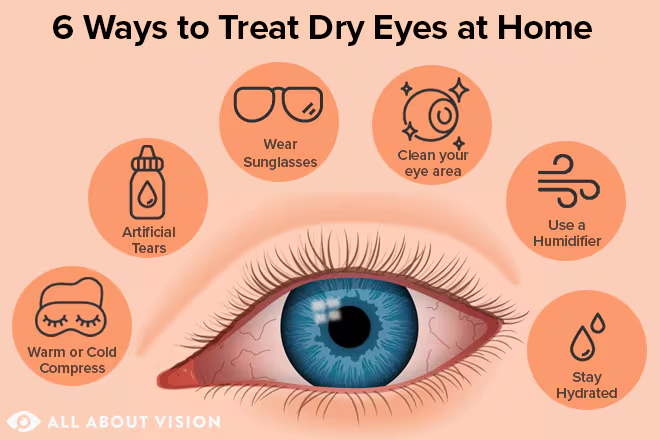
Itchy dry eyes happen when the tear film protecting the eyes is disrupted, causing dryness and irritation. Several factors like reduced tear production, gland blockages, allergies, and environmental exposures contribute to this discomfort.
Key Takeaways
- Warm compresses unclog eyelid glands to improve tear quality
- Omega-3 fatty acids reduce inflammation and support tear production
- Frequent blinking and 20-20-20 breaks help maintain eye moisture during screen use
- Eyelid hygiene prevents gland blockages and eye inflammation
- Hydration and humidifiers maintain natural eye moisture
- Avoid direct airflow and environmental irritants that accelerate tear evaporation
- Aloe vera and cold compresses soothe inflammation and itching
- Dietary adjustments support overall eye health by reducing dryness and inflammation.
Causes of Itchy Dry Eyes
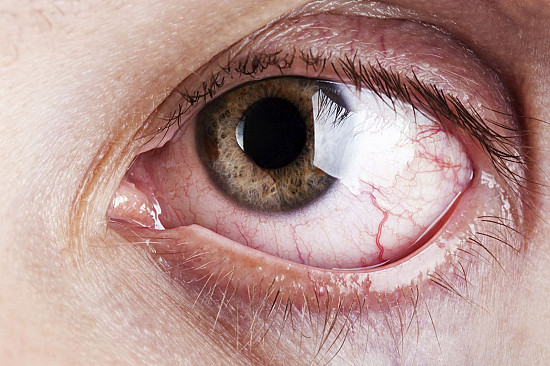
Itchy dry eyes happen when the eyes do not stay properly lubricated. Tears protect the eyes by creating a moist layer called the tear film. This film has three parts: an oily layer, a watery layer, and mucus. Problems with any of these parts can cause dryness and itchiness.
- Decreased Tear Production: Sometimes, the tear glands do not make enough watery tears. This can be due to aging, medical conditions like Sjogren’s syndrome, rheumatoid arthritis, lupus, or vitamin A deficiency. Certain medicines such as antidepressants, antihistamines, and blood pressure drugs can reduce tear production.
- Increased Tear Evaporation: When the oily layer is missing or poor due to blocked glands on the eyelids (called meibomian glands), tears evaporate too fast. Conditions such as blepharitis or skin conditions like rosacea often block these glands.
- Environmental Factors: Exposure to wind, dry air, smoke, or air conditioning can dry out eyes quickly. Prolonged screen usage also causes poor blinking, leading to faster tear evaporation.
- Allergies: Allergic conjunctivitis from pollen, dust mites, animal dander, or cosmetic products causes itching and dryness. The body’s response releases histamine, irritating nerve endings in the eyes.
- Contact Lens Use: Poorly fitting lenses or long wear causes mechanical irritation and increased dryness.
- Eyelid Problems: Conditions like eyelids turning inward or outward affect tear distribution on the eye surface.
Symptoms of Itchy Dry Eyes
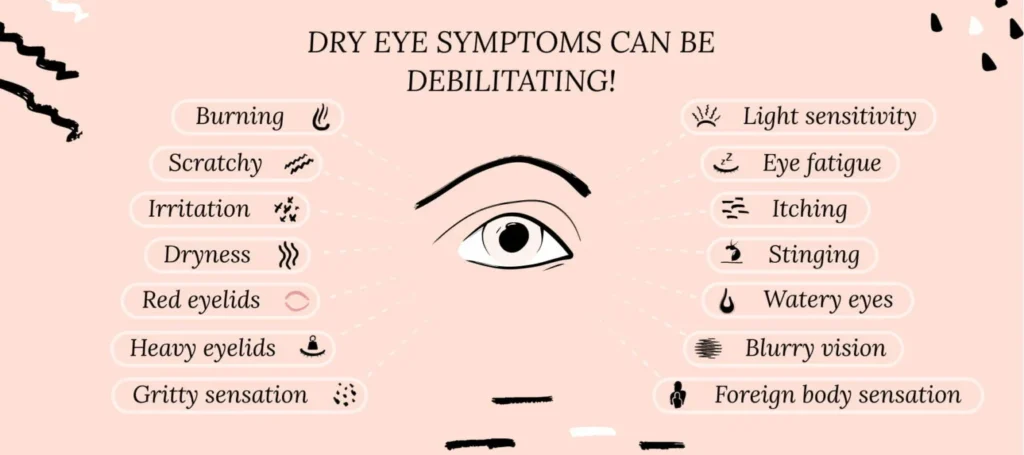
The symptoms of itchy dry eyes can be mistaken for general eye strain or allergies but knowing the difference helps in seeking proper care. Itchy dry eyes usually show:
- Persistent Itching and Irritation: When eyes lack sufficient moisture, nerve endings on the surface become exposed and irritated. This constant irritation triggers an ongoing urge to scratch or rub the eyes. The itch does not easily go away because the drying tear film fails to keep the eyes lubricated.
- Sensation of Grittiness or Having Sand in the Eyes: Many people with dry eyes describe feeling like there is sand, dust, or small particles in their eyes. This gritty feeling occurs because the damaged, dry surface no longer feels smooth. The lack of a protective tear layer exposes sensitive nerves, causing discomfort similar to having foreign material trapped.
- Redness and Inflammation of the Eye Surface and Eyelid Edges: Dryness and irritation cause swelling and dilation of tiny blood vessels on the white part of the eye and at the eyelid margins. This results in noticeable redness. Inflammation may also cause the eyelids to become tender or crusted, especially if gland blockage or blepharitis is present.
- Burning or Stinging Feelings: A burning or stinging sensation in the eyes is common because dryness reduces the protective tear film that normally soothes the eye surface. Inflammation and exposure to irritants worsen this sensation. The discomfort usually persists and may flare up with activities like screen use or exposure to wind and smoke.
- Excessive Tearing as a Paradoxical Response: While it may seem contradictory, watery eyes often accompany dry eye symptoms. The dryness irritates the eyes, triggering a reflex that causes the tear glands to overproduce watery tears. These thin tears evaporate quickly, failing to adequately lubricate, leaving a cycle of dryness and watery irritation.
- Blurry Vision, Worsened by Visual Tasks Such as Reading or Screen Time: When the tear film is unstable, the smooth optical surface needed for clear vision becomes uneven. This leads to blurred or fluctuating vision, especially during tasks requiring prolonged focus like reading or using a computer. Sustained dryness also causes eye fatigue, further affecting clarity.
- Sensitivity to Light (Photophobia): Dry, irritated eyes are more sensitive to light. The damaged surface and inflammation make the eyes react strongly to brightness, causing discomfort or pain in well-lit environments. This sensitivity can sometimes limit outdoor activities or cause headaches.
10 Natural Home Remedies for Itchy Dry Eyes
If you’re struggling with uncomfortable, irritated, or dry eyes, simple natural remedies can provide soothing relief without the need for harsh treatments.
- Warm Compress for Eye Hydration
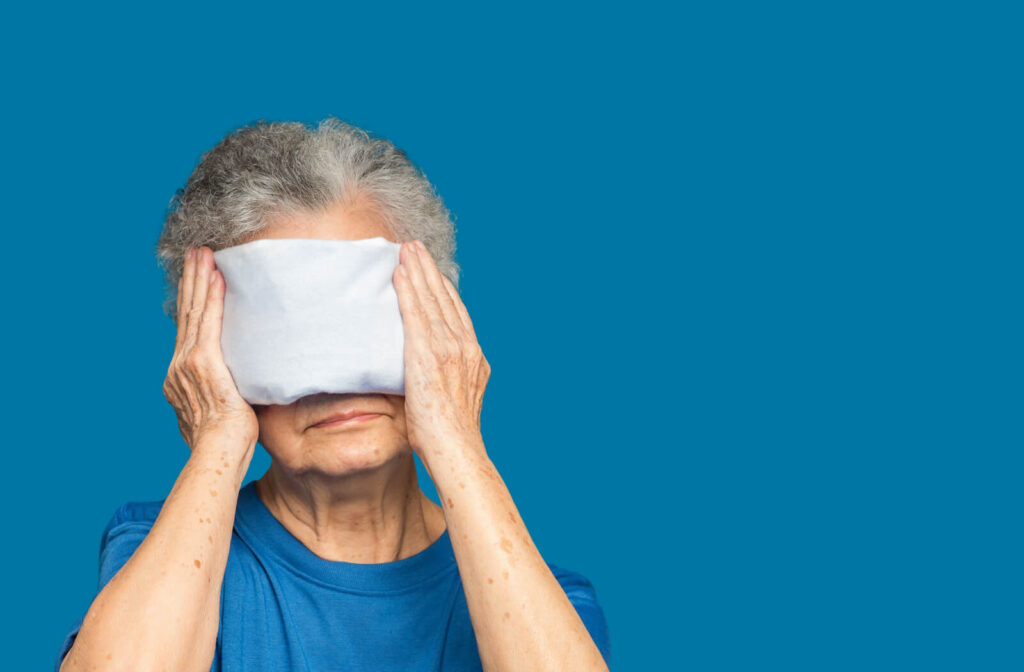
A warm compress helps unclog the meibomian glands at the eyelid edges, which produce the oily layer of tears. This oil layer is essential for slowing tear evaporation and keeping the eyes moist. When these glands are clogged, tear quality declines, causing dry, itchy eyes.
How to do it:
- Soak a clean washcloth in warm (not hot) water.
- Wring out excess water so the cloth is damp, not dripping.
- Close your eyes and place the compress over your lids for 5–10 minutes.
- Reheat the cloth as needed; gently massage along eyelids afterward to encourage oil release.
- Perform daily until symptoms improve; avoid if irritation or pain occurs.
Benefits: Improves natural tear quality by loosening and releasing clogged oils, reducing dryness and irritation.
- Omega-3 Fatty Acids to Reduce Inflammation

Omega-3 fatty acids have anti-inflammatory properties that enhance oil gland function and tear production, reducing dryness and itchiness.
Best sources:
- Fatty fish (salmon, mackerel, sardines)
- Flaxseeds and chia seeds
- Walnuts
Evidence: Clinical studies suggest regular intake of omega-3s can decrease dry eye symptoms. Supplements are an option, but consult your doctor, especially if you take blood thinners.
- Frequent Blinking and Screen Breaks
Prolonged screen use decreases blink rates, leading to faster tear evaporation and dryness.
What to do:
- Follow the 20-20-20 rule: Every 20 minutes, look at something 20 feet away for 20 seconds.
- Practice intentional, slow, and complete blinking to spread tears evenly.
- Reduce continuous screen time when possible.
Benefits: These habits help maintain the tear film and reduce symptoms of digital eye strain.
- Eyelid Hygiene and Gentle Cleansing
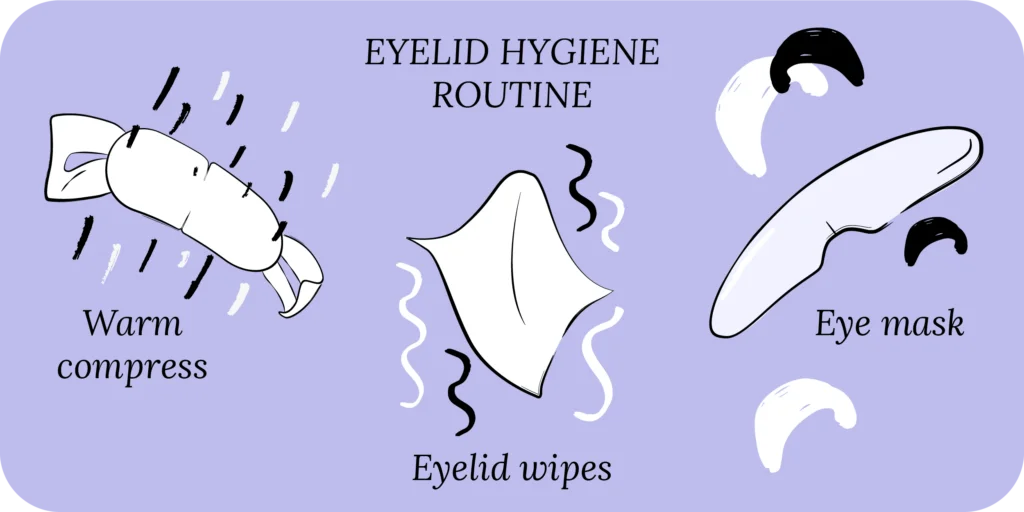
Clean eyelids remove debris, bacteria, and excess oil that can clog meibomian glands and cause inflammation.
How to do it:
- Wash daily with warm water and a few drops of baby shampoo or preservative-free eyelid cleanser.
- Gently clean along the lash line with a damp cloth or cotton pad.
- Rinse thoroughly; follow with a warm compress if needed.
Benefits: Reduces inflammation and supports healthy tear stability and eyelash health.
- Hydration: Drinking Water for Eye Moisture
Adequate daily hydration is essential for tear production. Dehydration reduces tear volume and worsens dryness.
How much:
- Women: 11.5 cups (2.7 liters) daily
- Men: 15.5 cups (3.7 liters) daily (from food and beverages)
- Watch for signs of dehydration (dry mouth, dark urine).
Benefits: Maintains natural tear formation and eye moisture.
- Humidifiers to Maintain Ambient Moisture
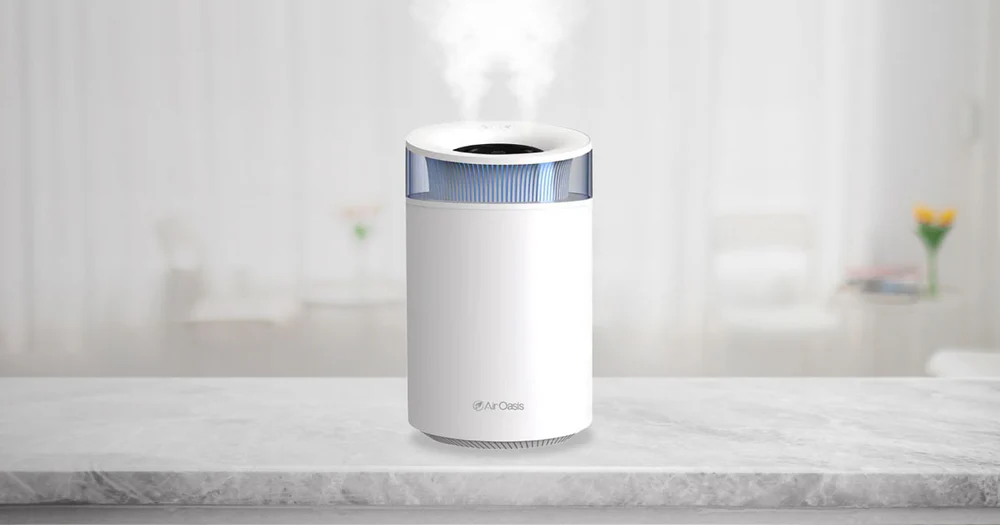
Dry indoor air accelerates tear evaporation. Humidifiers add moisture to the air, helping preserve natural tear levels.
How to use:
- Place a humidifier in your bedroom or workspace.
- Aim for indoor humidity between 40–60%.
- Clean humidifiers regularly to prevent mold or bacteria.
Benefits:Reduces tear evaporation and eye discomfort, especially in dry or cold environments.
- Aloe Vera for Soothing Inflammation
Aloe vera has anti-inflammatory and moisturizing properties that can reduce eyelid irritation associated with dry eyes.
How to use:
- Apply pure aloe vera gel around (not inside) the eyelid margin.
- Avoid contact with the eyeball to prevent stinging.
- Use 1–2 times daily as needed.
Benefits: Calms inflammation and redness, promoting eyelid comfort.
- Avoiding Direct Airflow and Environmental Irritants
Exposure to fans, air conditioning, heaters, smoke, and dust can increase tear evaporation and irritation.
What to do:
- Position fans and vents away from your face.
- Wear protective glasses in windy or dusty outdoor environments.
- Use air purifiers indoors to minimize pollutants.
Benefits: Protects the tear film and reduces exposure to irritants that can worsen itchiness.
- Cold Compress as an Itch Soother
A cold compress constricts blood vessels and cools inflamed tissues, providing immediate relief from itchiness.
How to use:
- Use a clean cloth soaked in cold water or a chilled gel pack covered in fabric.
- Place on closed eyelids for 5–10 minutes.
- Repeat as needed throughout the day.
Benefits: Offers quick relief from itchy sensations.
- Dietary and Lifestyle Adjustments
Certain foods and habits can affect inflammation, hydration, and tear quality.
What to do:
- Limit caffeine and alcohol, which can dehydrate.
- Avoid processed, high-sodium foods that can worsen dryness.
- Eat foods rich in vitamins A, C, E, and zinc (leafy greens, citrus, nuts, dairy).
- Manage allergies with avoidance or medications.
- Prioritize sleep and stress management for overall eye health.
Benefits: Supports healthy tear function and reduces discomfort from dry, itchy eyes.
How to Diagnose Itchy Dry Eyes
Diagnosis involves evaluating symptoms and clinical tests to examine tear production and eye surface health.
- Tear Production Tests: Schirmer’s test measures tear quantity using a small strip under the lower eyelid. Tear break-up time (TBUT) test checks how quickly tears evaporate.
- Eye Examination: A slit lamp microscope lets doctors see the tear film, eyelids, and signs of inflammation or gland blockage.
- Allergy Testing: If allergies are suspected, tests help identify irritants causing eye itchiness.
Treatment Options for Itchy Dry Eyes
Choosing the right treatment depends on the cause and severity of symptoms. Common treatments include:
- Artificial Tears: Over-the-counter lubricating drops help restore moisture and soothe itchiness. Use preservative-free versions for frequent application.
- Warm Compresses and Eyelid Hygiene: Applying warm compresses daily unclogs blocked oil glands, improving natural tear quality. Cleaning eyelids gently with mild cleansers helps reduce inflammation.
- Prescription Eye Drops: For inflammation or allergy-related itchiness, doctors may prescribe steroid or antihistamine eye drops. Immunosuppressive drops like cyclosporine help in chronic dry eye.
- Punctal Plugs: These tiny devices block tear drainage ducts to keep tears on the eye surface longer.
- Omega-3 Supplements: Nutritional supplements improve gland function and reduce inflammation.
- Lifestyle Changes: Limiting screen time, using humidifiers, wearing protective eyewear in windy conditions, and staying hydrated support treatment and prevent flare-ups.
When to See a Doctor
If itching and dryness persist despite home care, worsen, or associate with pain or vision changes, seek professional advice. Infections or serious conditions may mimic dry eyes and require medical treatment.
Conclusion
Itchy dry eyes occur when the tear film, which keeps the eyes lubricated, is disrupted due to reduced tear production or increased tear evaporation. Causes include aging, medical conditions, medications, allergies, environmental factors, and eyelid problems. Symptoms typically include persistent itching, irritation, grittiness, redness, burning sensations, watery eyes, blurry vision, and light sensitivity. Natural home remedies can provide relief without the need for complex treatments. Warm compresses help loosen clogged oil glands, improving tear quality. Omega-3 fatty acids reduce inflammation and support tear production. Frequent blinking and screen breaks prevent tear evaporation. Maintaining eyelid hygiene prevents gland blockage.
Proper hydration supports tear formation, while humidifiers maintain ambient moisture. Aloe vera soothes inflammation, and cold compresses ease itching. Avoiding direct airflow and environmental irritants helps protect tear film. Dietary and lifestyle changes also support eye health by reducing dehydration and inflammation. These remedies, combined with proper diagnosis and care, can effectively manage itchy dry eyes.
Frequently Asked Questions (FAQs)
What causes itchy dry eyes?
Itchy dry eyes occur when the tear film protecting the eyes is compromised, either by inadequate tear production or by rapid tear evaporation. Common causes include blocked meibomian glands, aging, allergies, environmental irritants, medications, and certain medical conditions like Sjogren’s syndrome.
What are the typical symptoms?
Symptoms often include persistent itching, redness, burning, a gritty sensation, excessive tearing, blurry vision, and sensitivity to light. These occur because the eye surface is dry and inflamed, exposing nerve endings.
How can I relieve itchy dry eyes naturally?
Home remedies such as warm compresses, omega-3 supplementation, eyelid hygiene, frequent blinking, hydration, use of humidifiers, aloe vera application, and cold compresses can provide significant relief by improving tear quality and reducing inflammation.
When should I see a doctor?
If symptoms persist for weeks, worsen, cause pain, or changes in vision occur, consult an eye care professional. Persistent dryness may require prescription treatments or procedures.
What medical treatments are available?
Treatments include artificial tears, prescription anti-inflammatory eye drops, punctal plugs to reduce tear drainage, thermal therapies, and specialized contact lenses designed to protect and moisturize the eye surface.
Does screen time affect dry eyes?
Yes. Prolonged screen use reduces blinking rate, accelerating tear evaporation, which worsens dryness and itchiness. Following the 20-20-20 rule and taking regular breaks helps maintain eye moisture.
Can allergies cause itchy dry eyes?
Allergic conjunctivitis triggers histamine release, leading to itching, redness, and dryness. Managing allergies through avoidance or medications can reduce eye symptoms.
Reference
- “Home Remedies for Dry Eyes That Work,” WebMD, published April 24, 2025
URL: https://www.webmd.com/eye-health/dry-eyes-home-remedies
Covers natural treatments such as warm compresses, artificial tears, omega-3 fatty acids, blinking exercises, and environmental adjustments for dry itchy eyes. - “Natural Remedies to Relieve Dry Eyes,” Giddens Optometry, published December 7, 2023
URL: https://www.giddensoptometry.ca/natural-remedies-to-relieve-dry-eyes/
Discusses causes of dry eye, eyelid hygiene, nutritional support, hydration, and lifestyle tips for relief. - “15 Simple Home Remedies for Dry Eyes,” Good Eyes Clinic, published June 22, 2025
URL: https://www.goodeyes.com/dry-eye/home-remedies-dry-eyes/
Provides a concise list of home remedies ranging from humidifiers and dietary changes to cold compresses and environmental modifications. - “Itchy Eyes at Night: Home Remedies, Causes, and Avoiding,” Medical News Today, published December 5, 2023
URL: https://www.medicalnewstoday.com/articles/321776
Explains itchy eyes causes including dryness and allergies with practical home remedies and preventive measures.
Autum Harkins is a CNS with an MS in Clinical Nutrition from Maryland University of Integrative Health (2017) and 8 years in integrative clinics. She develops individualized protocols for deficiencies, digestive health, and women’s wellness, prioritizing third-party-tested supplements. Autum contributes to case series and webinars and mentors practitioners on lab interpretation. Credentials: CNS Board (ANA/BCNS) number, state nutrition licensure where applicable, and professional memberships with links.

